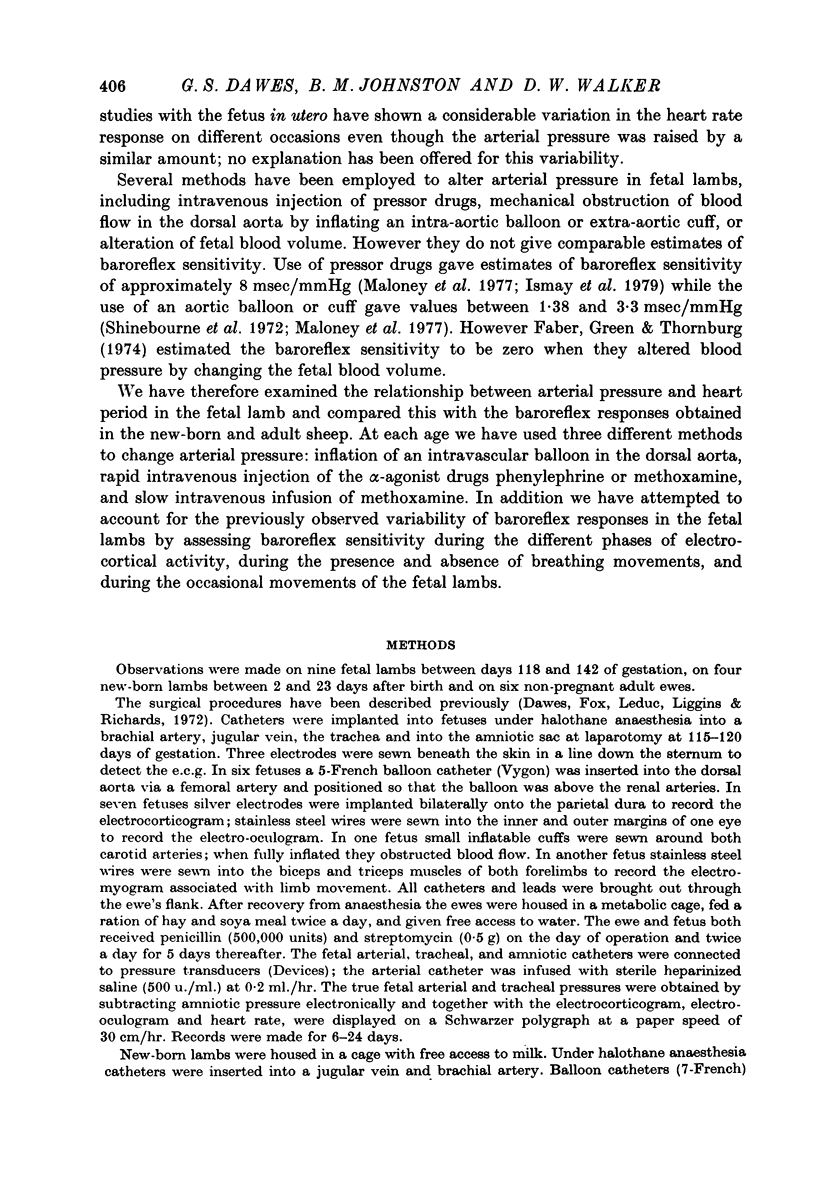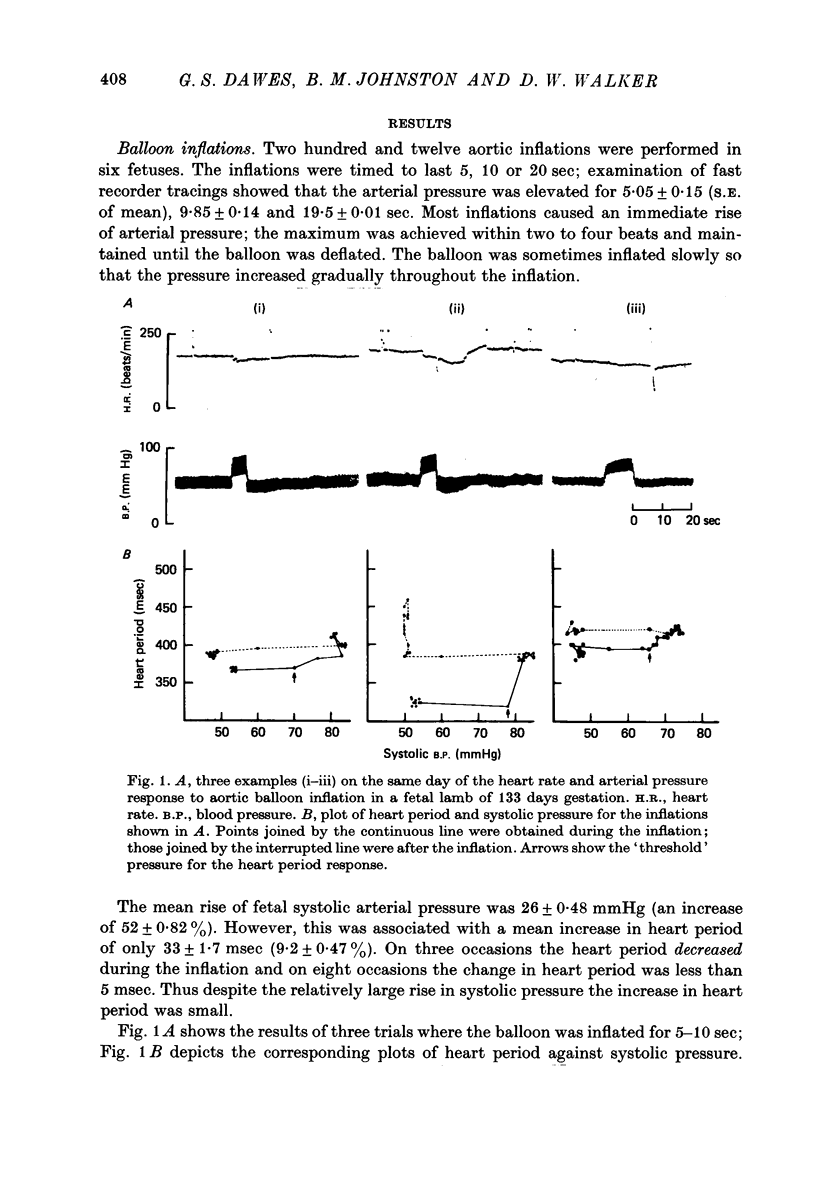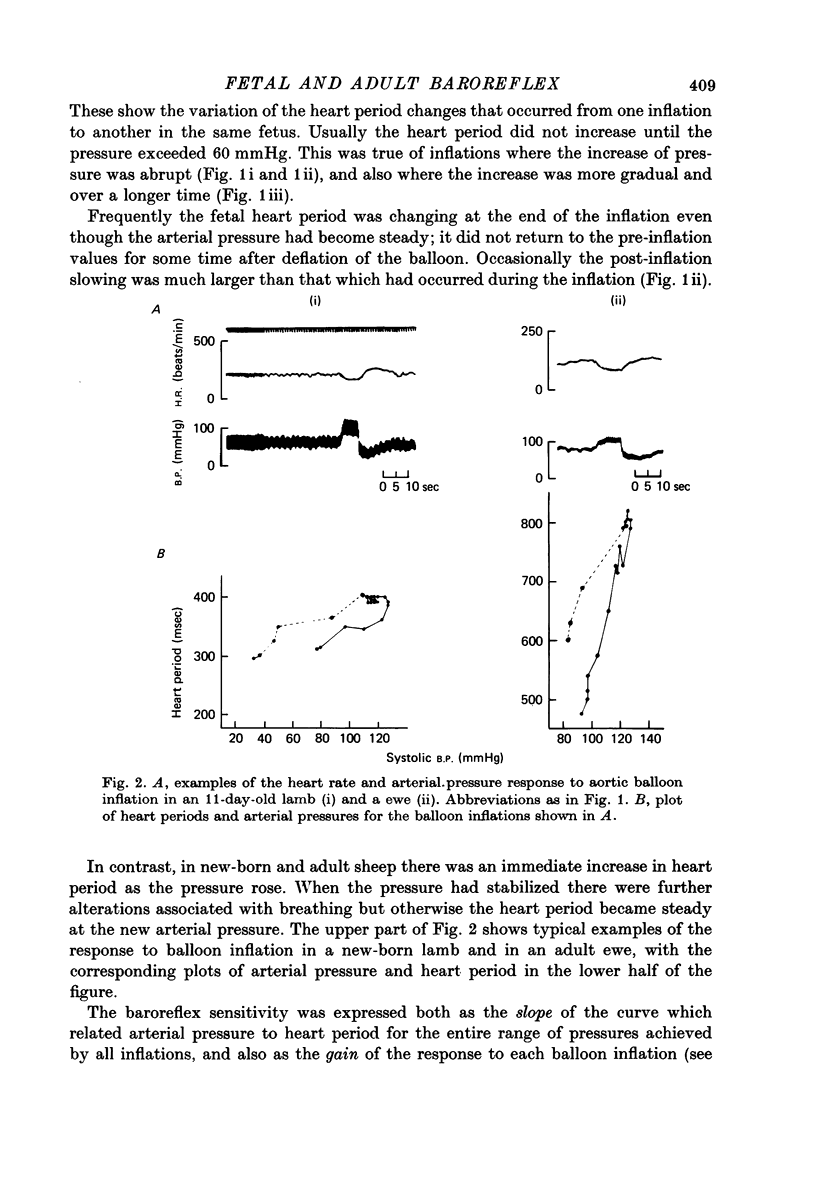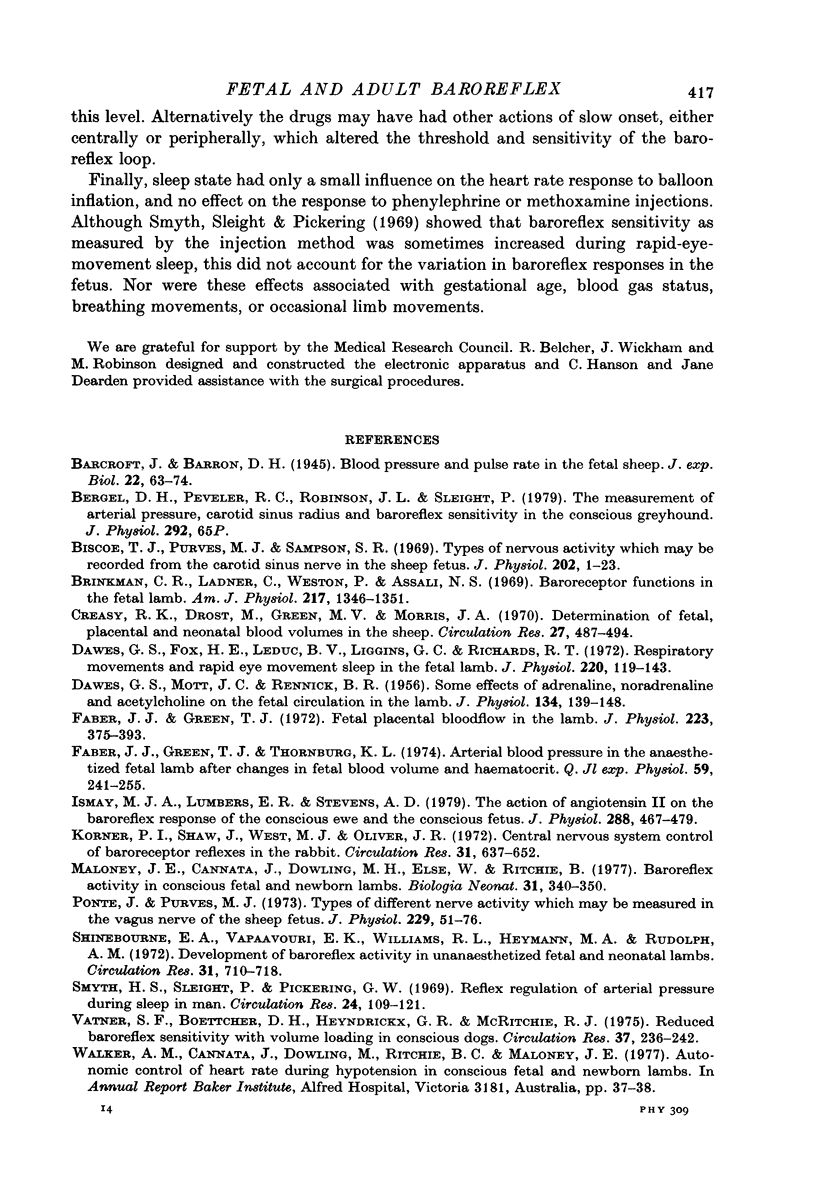Abstract
1. Baroreflex activity was assessed in nine fetal, four new-born and six adult sheep, using the relationship between heart period and arterial pressure. Arterial pressure was raised either by inflating a balloon in the dorsal aorta, by rapid intravenous injection of phenylephrine or methoxamine, or by slow intravenous infusion of methoxamine. 2. In the fetus the three methods gave different estimates of baroreflex sensitivity (balloon, 1.3 +/- 0.7 mmHg; injections, 5.4 +/- 0.5 msec mmHg; infusions, 7.2 +/- 0.9 msec/mmHg) whereas they were comparable in the new-born and adult. 3. Estimates of baroreflex sensitivity were significantly lower in the fetus and new-born than in the adult whichever method was used. 4. In the fetus there were variable changes of heart period when arterial pressure was raised by inflation of the balloon. The responses to injection of phenylephrine or methoxamine were also variable. 5. This variability was not associated with changes in electrocortical activity, the presence or absence of breathing movements or limb movements, or changes of blood gases. 6. In the fetus the heart period frequently did not change unless the arterial pressure was raised by approximately 15 mmHg (to 61 mmHg), suggesting that the threshold for baroreflex activity is above the normal range of arterial pressure before birth.
Full text
PDF












Selected References
These references are in PubMed. This may not be the complete list of references from this article.
- Bergel D. H., Peveler R. C., Robinson J. L., Sleight P. The measurement of arterial pressure, carotid sinus radius and baroreflex sensitivity in the conscious greyhound [proceedings]. J Physiol. 1979 Jul;292:65P–66P. [PubMed] [Google Scholar]
- Biscoe T. J., Purves M. J., Sampson S. R. Types of nervous activity which may be recorded from the carotid sinus nerve in the sheep foetus. J Physiol. 1969 May;202(1):1–23. doi: 10.1113/jphysiol.1969.sp008792. [DOI] [PMC free article] [PubMed] [Google Scholar]
- Brinkman C. R., 3rd, Ladner C., Weston P., Assali N. S. Baroreceptor functions in the fetal lamb. Am J Physiol. 1969 Nov;217(5):1346–1351. doi: 10.1152/ajplegacy.1969.217.5.1346. [DOI] [PubMed] [Google Scholar]
- Creasy R. K., Drost M., Green M. V., Morris J. A. Determination of fetal, placental and neonatal blood volumes in the sheep. Circ Res. 1970 Oct;27(4):487–494. doi: 10.1161/01.res.27.4.487. [DOI] [PubMed] [Google Scholar]
- DAWES G. S., MOTT J. C., RENNICK B. R. Some effects of adrenaline, noradrenaline and acetylcholine on the foetal circulation in the lamb. J Physiol. 1956 Oct 29;134(1):139–148. doi: 10.1113/jphysiol.1956.sp005630. [DOI] [PMC free article] [PubMed] [Google Scholar]
- Dawes G. S., Fox H. E., Leduc B. M., Liggins G. C., Richards R. T. Respiratory movements and rapid eye movement sleep in the foetal lamb. J Physiol. 1972 Jan;220(1):119–143. doi: 10.1113/jphysiol.1972.sp009698. [DOI] [PMC free article] [PubMed] [Google Scholar]
- Faber J. J., Green T. J. Foetal placental blood flow in the lamb. J Physiol. 1972 Jun;223(2):375–393. doi: 10.1113/jphysiol.1972.sp009853. [DOI] [PMC free article] [PubMed] [Google Scholar]
- Faber J. J., Green T. J., Thornburg K. L. Arterial blood pressure in the unanaesthetized fetal lamb after changes in fetal blood volume and haematocrit. Q J Exp Physiol Cogn Med Sci. 1974 Jul;59(3):241–255. doi: 10.1113/expphysiol.1974.sp002266. [DOI] [PubMed] [Google Scholar]
- Ismay M. J., Lumbers E. R., Stevens A. D. The action of angiotensin II on the baroreflex response of the conscious ewe and the conscious fetus. J Physiol. 1979 Mar;288:467–479. [PMC free article] [PubMed] [Google Scholar]
- Korner P. I., Shaw J., West M. J., Oliver J. R. Central nervous system control of baroreceptor reflexes in the rabbit. Circ Res. 1972 Nov;31(5):637–652. doi: 10.1161/01.res.31.5.637. [DOI] [PubMed] [Google Scholar]
- Maloney J. E., Cannata J., Dowling M. H., Else W., Ritchie B. Baroreflex activity in conscious fetal and newborn lambs. Biol Neonate. 1977;31(5-6):340–350. doi: 10.1159/000240985. [DOI] [PubMed] [Google Scholar]
- Ponte J., Purves M. J. Types of afferent nervous activity which may be measured in the vagus nerve of the sheep foetus. J Physiol. 1973 Feb;229(1):51–76. doi: 10.1113/jphysiol.1973.sp010126. [DOI] [PMC free article] [PubMed] [Google Scholar]
- Shinebourne E. A., Vapaavuori E. K., Williams R. L., Heymann M. A., Rudolph A. M. Development of baroreflex activity in unanesthetized fetal and neonatal lambs. Circ Res. 1972 Nov;31(5):710–718. doi: 10.1161/01.res.31.5.710. [DOI] [PubMed] [Google Scholar]
- Smyth H. S., Sleight P., Pickering G. W. Reflex regulation of arterial pressure during sleep in man. A quantitative method of assessing baroreflex sensitivity. Circ Res. 1969 Jan;24(1):109–121. doi: 10.1161/01.res.24.1.109. [DOI] [PubMed] [Google Scholar]
- Vatner S. F., Boettcher D. H., Heyndrickx G. R., McRitchie R. J. Reduced baroreflex sensitivity with volume loading in conscious dogs. Circ Res. 1975 Aug;37(2):236–242. doi: 10.1161/01.res.37.2.236. [DOI] [PubMed] [Google Scholar]


